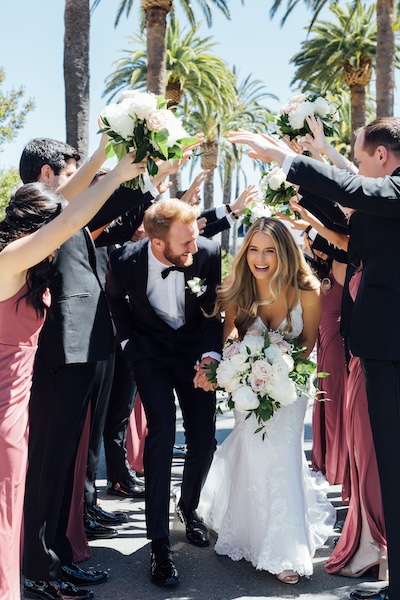Business + Marketing
If you were to ask your happiest clients why they loved working with you, I am willing to bet that it boils down to the way you made them feel. Every referral and positive review is earned through exceeding client expectations and giving them an extraordinary experience from start to finish. Crafting a powerful clientflow–or workflow—enables you to do just that.
Not only that, creating a cohesive clientflow means getting paid while you sleep, having the freedom to work from anywhere, and never dropping the ball on a client again. It gives you peace of mind and time back to do more of what drives you. After all, most of us chose to be an independent business owner to experience feelings of freedom not friction.
What is a Clientflow?
A clientflow includes the entire process of providing services to your clients, from responding to their initial inquiry, offering the photography package that meets their needs, and executing the project. Within your clientflow, there’s the work you have to get done as well as the steps your clients need to take, such as selecting the appropriate package, signing your contract, filing out your questionnaires, and providing input throughout the client journey.
[Read: Photography Workflow Tips to Streamline, Simplify and Optimize]
As a photographer, you might have separate clientflows for weddings, portraits, and families (it all depends on what you offer). The steps inside each clientflow might be the same, but the experience can vary to suit each client type or even each individual client.
Though every photography business is unique, your clientflow will likely include the following steps:
- Initial Contact
- Service Selection
- Contract Signing
- Invoice and Payment
- Communication and Work Process
- Service and Deliverable
- Renewal Decision
- Recommendation or Referral
Here are some quick tips to help you make the most of each stage in your Clientflow:
1. Initial Contact
A potential client has reached out to you to learn more about your pricing and services. This is the relationship kickoff, the ultimate first impression, and it is critical to have a clear process for communicating with potential clients right out of the gate. I recommend embedding a contact form directly into your website that funnels leads immediately from inquiry into the next stage of your clientflow so that there is no lapse in communication.
Faster responses increase conversion and build trust. A seamless clientflow means never having to remember to respond to an inquiry again because they automatically receive the next steps as soon as they submit the form.
[Read: Does Your Brand Need a Mom? It May Be Time to Add Outsourcing to Your Photography Plan]
I also recommend optimizing your inquiry auto-response to strive for mutual qualification and transparent communication. Remember, you should also be assessing whether an inquiry is the right client fit for you.
There are two common ways photographers do this. The first is to include a link to you calendar so a potential client can easily set up time where you can connect on the details of the project. The second is to include a questionnaire so that you can immediately get more detailed information about their needs. However you choose to structure this phase of your clientflow, the key is to ensure it is seamless and empowers the client to move forward with ease.
2. Service Selection
At this point your client is ready to decide whether to book with you. Using pricing guides or sales brochures help potential clients understand exactly what you offer and determine what would best suit their needs. The more you can customize your brochure to speak directly to your potential clients, the more impressive the experience will be. Personalization leaves a powerful impression and a seamless clientflow should enable you to offer that at scale.
3. Contract Signing
You’re both ready to move forward, but first you need to set expectations. It’s important that your clients always sign a contract before paying so you know they’re agreeing to the scope of work, pricing, timeline, and more.
Send contracts populated with your clients’ service selection and use templates with the clauses and terms appropriate for a photography business. This entire process should happen online and is ideally integrated with the first payment (such as a nonrefundable retainer) to seal the deal. Requiring a potential client to manually print and sign a contract leads to friction that is not only unnecessary but feels archaic in the digital age. Contracts often put people on edge to begin with so making this process as straightforward as possible is critical in the clientflow process.
4. Invoice and Payment
Your clients already expect a seamless payment process in today’s digital-first world, so providing one is essential. Delivering anything less than seamless can have an outsized impact on a client’s impression of your business—and not a good one. They’ll notice if this step feels difficult, or worse, unsecured. They’ll feel frustrated if they have to look for that checkbook they haven’t used in a decade and then wait an eternity for the money to leave their account.
Digital payments are the industry standard. Send an invoice that allows your clients to pay online quickly while also letting you set up recurring payments and reminders to automate the process.
5. Communication and Work Process
Communication is at the core of every relationship—especially one between a photographer and a client. It’s essential for project alignment, progress reporting, and overall sentiment. Make sure you’re communicating with your clients consistently in their preferred methods and meeting their needs every step of the way.
Use a platform that enables you to view all client communication and materials in one place. I also recommend having a holistic view of your work pipeline, defined stages for your customer journey to measure progress, and automations to remove predictable bottlenecks.
6. Service and Deliverable
This is where your superpower shines and you pick up your camera. Leverage smooth communication throughout your clientflow to ensure that you provide an extraordinary experience at their shoot or event. As your business grows, also consider outsourcing or bringing on key partners to aid in exceeding expectations (image editing, album/product design, etc.) if that aligns with your business model. Identify roadblocks that come with scale and be strategic in adjusting your strategy as you go.
7. Renewal Decision
For many photography businesses, you have the opportunity to offer additional services to your existing clients (seasonal portrait sessions, new babies, updated head shots) as well as additional products (prints, canvases, albums). If this is applicable to your business, remember that clients will consider every step of the clientflow to decide if they’d like to work with you again in the future or hire a different photographer.
Loyalty is earned and experience is critical to cultivate a strong connection with your clients. Build surprise and delight moments into your clientflow to influence future renewal decisions. This could look like client gifting, celebrating milestones, or offering exclusives. By proactively designing your clientflow with this in mind, you can impact your client satisfaction and retention.
8. Making a Recommendation or Referral
Every new client is a potential brand advocate. Referrals and reviews from current and past clients are powerful in generating new business. Create automated emails that are triggered at the end of a project to remind clients to review your service. You can also offer incentives for referrals like physical products or a future session with you.
Clientflow: The Bottom Line
As a photographer, client satisfaction is at the heart of your success and experience is everything. Having the ability to craft a clientflow that anticipates your clients’ needs, removes potential friction, and leaves them feeling wowed can dramatically propel your business forward. It also reduces the amount of time you spend managing the operations of your business so that you can get back to doing more of what you love—photography.

Natalie Franke is an author, community builder, neuroscience nerd and mama bear for small business. As one of the founders of the Rising Tide, the Head of Community at HoneyBook, and author of Built to Belong, she leads tens of thousands of independent business owners while fostering a spirit of community over competition around the world.
Photo © Olivia Reed Photography





